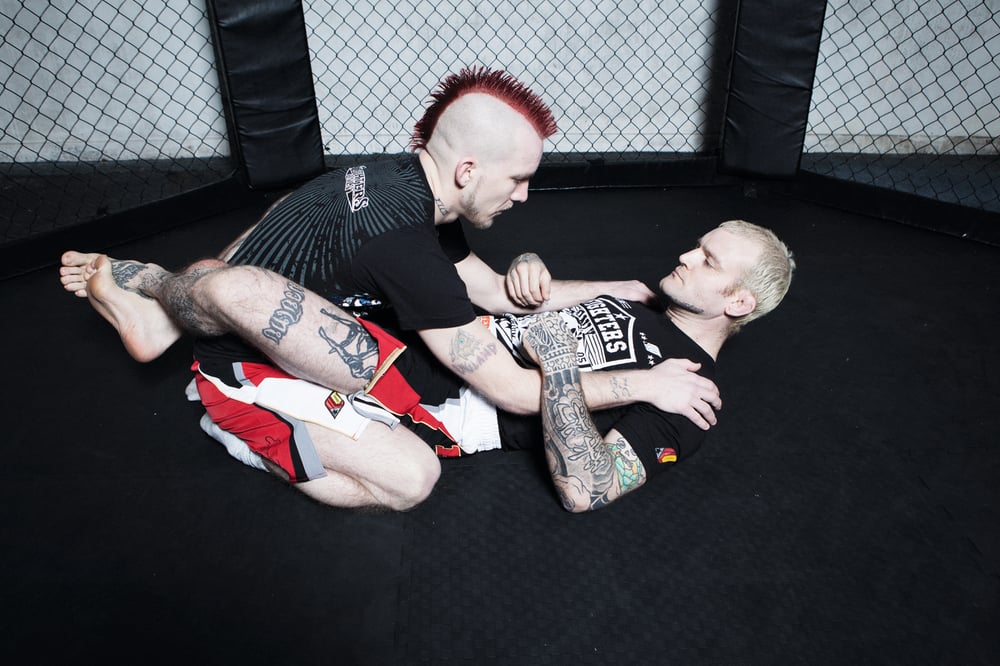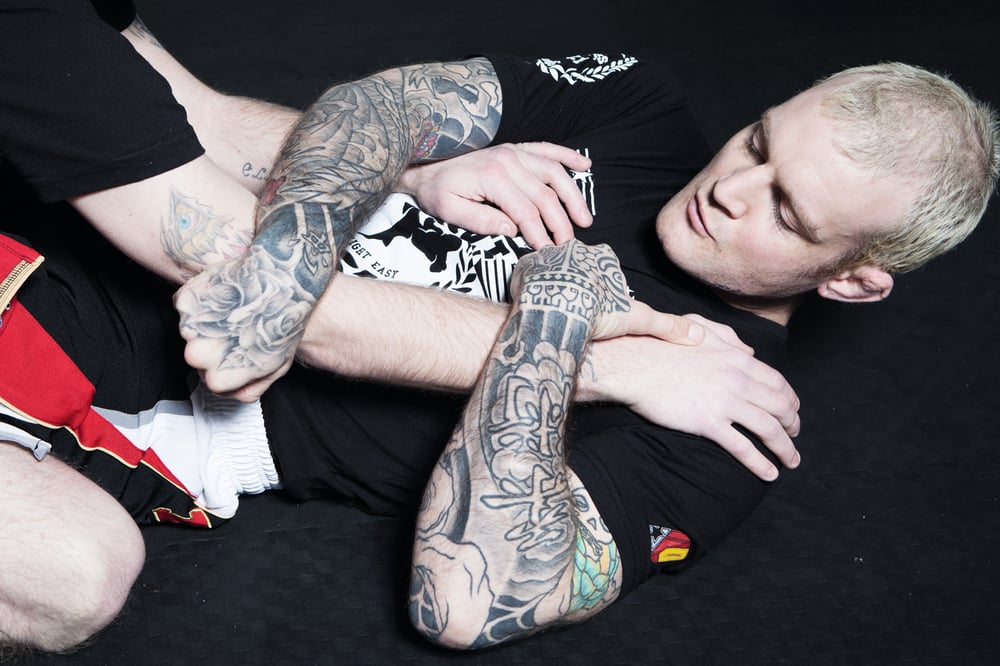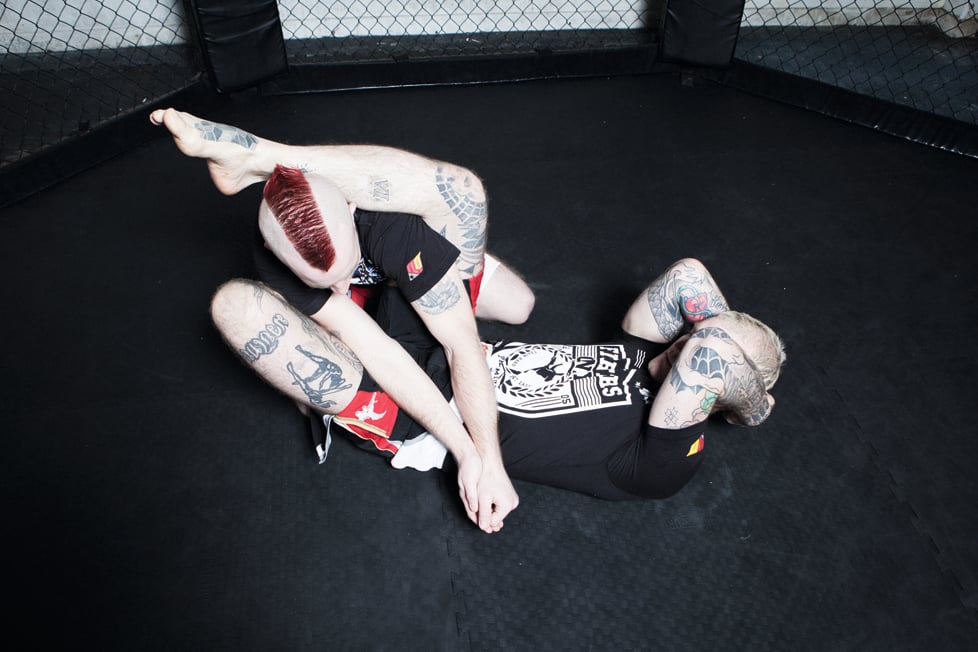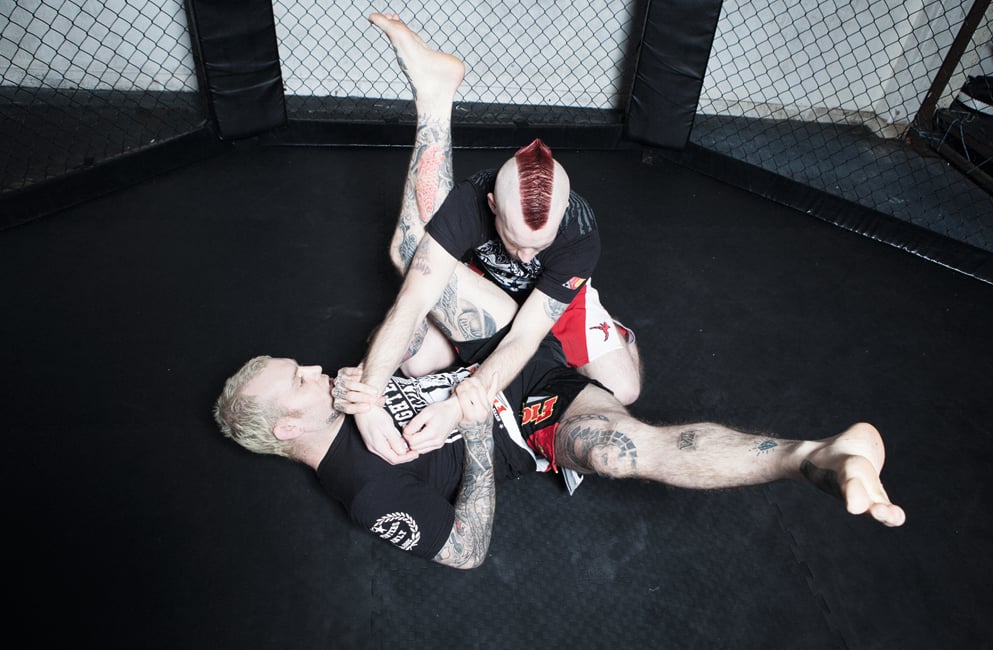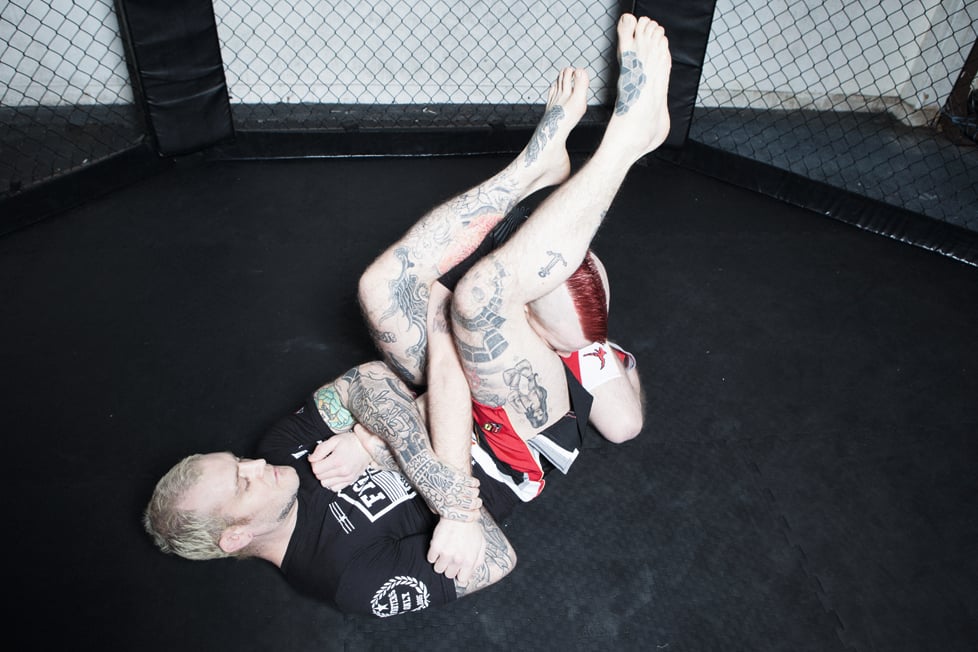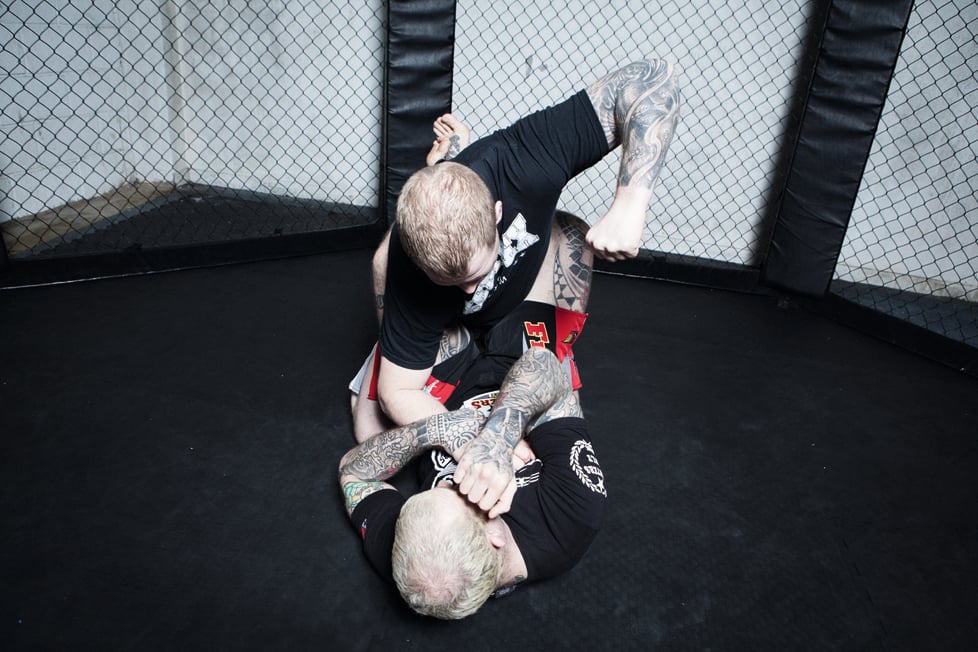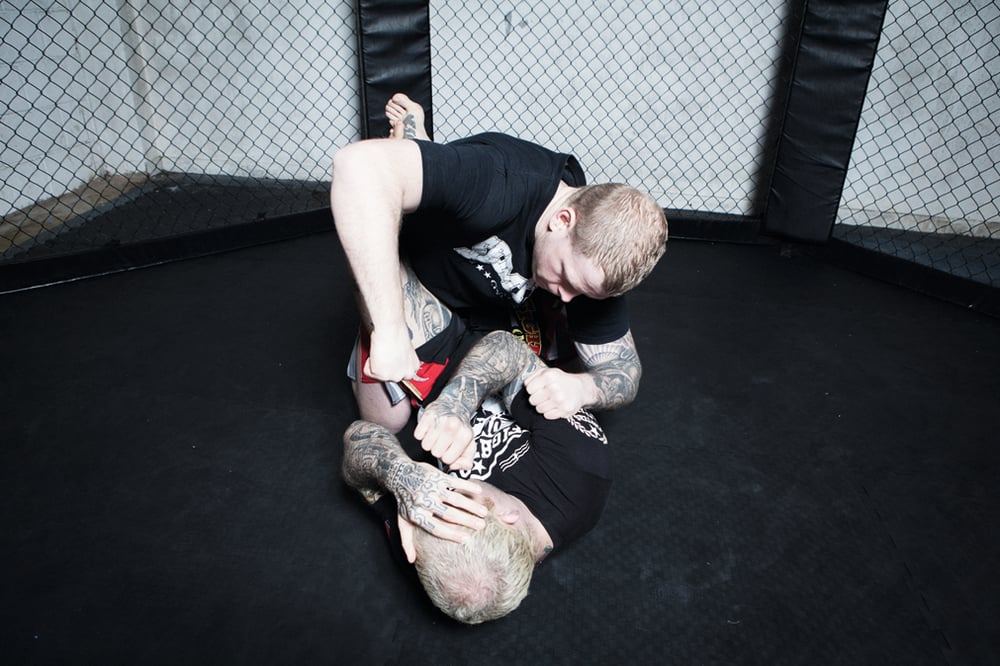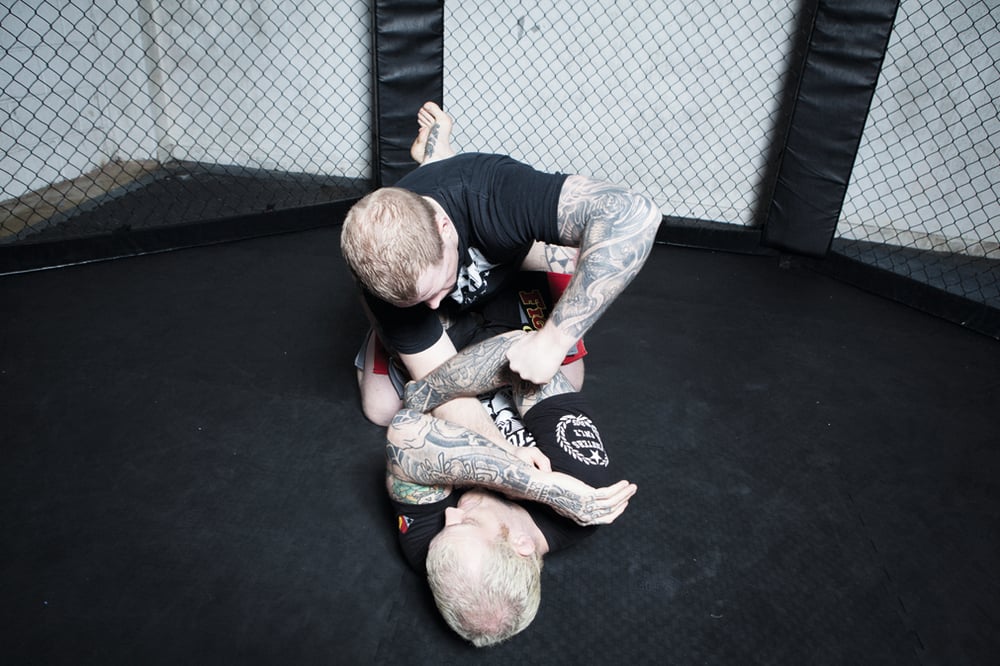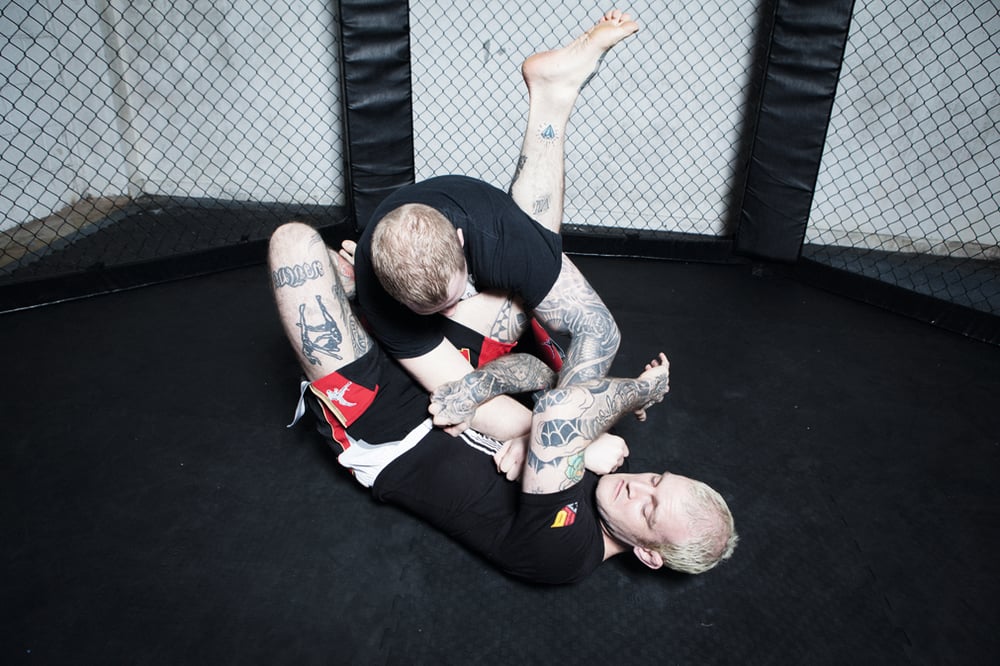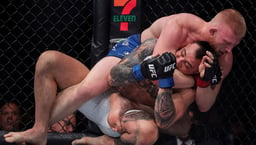
Issue 102
June 2013
Re-master the armbar, from proper preparation to correct execution
The set-up and execution of a good armbar from guard has three distinct phases:
PHASE ONE: The target arm must come to the centre of the attacker’s body or beyond.
PHASE TWO: The attacker must cut the angle and affect the posture of the defender.
PHASE THREE: The leg must pass over the head, whilst maintaining control over the defender’s posture.
PHASE ONE: CONTROL AND ISOLATING THE TARGET ARM
1. Dan (top) is in Pete’s guard. Dan is in the correct safety position, with each arm running down the lateral of Pete’s body.
2. Pete reaches over the top of Dan’s arms, securing the elbow with a false grip.
3. Detail of the grip.
4. If Pete were simply to attempt to pull Dan’s arm across to the centre, he would find the elbow locked tight against his hip and he would not be able to manipulate Dan’s position. To combat this, Pete lifts his hips, allowing him to drag the arm over without being inhibited by the hips.
5. Pete places one foot on Dan’s hip, on the same side as the target arm. Pete squeezes his knees together, another means of maintaining control over the target arm.
PHASE TWO: ANGLE OF ATTACK AND CONSOLIDATING POSTURE CONTROL
6. Using the foot on the hip, and kicking the inner thigh up into the armpit, Pete rotates his body, his spine ending up aligned with the arm. Pete’s far-side leg is right up on the back of Dan’s shoulders, the calf resting as high as the neck, aiding posture control
7. Pete consolidates control of Dan’s posture and maintains his grip on the arm by closing his guard again over Dan’s shoulder.
PHASE THREE: LOCKING OUT THE ARM AND PREVENTING THE STACK
8. With correct preparation, Pete is now able to pass his leg over Dan’s head without creating any escape space. If Pete had mistakenly twisted his hips in an attempt to create the angle without achieving control of Dan’s posture, he would inevitably allow Dan space to attempt to pull his arms free.
Here the actions of the legs are critical in preventing the stack. The leg that rests over Dan’s shoulders pushes away, preventing Dan driving towards Pete. The leg over Dan’s head pulls towards Pete’s butt, stopping Dan lifting his head to affect the stack. Finally, Pete squeezes his knees together to prevent Dan pulling his arm out. A small lift of the hips is all it will take to prevent the stack now. Pete grips the hand like a handshake, maintaining the ‘thumbs up’ for an optimal lock on the elbow.
TRAINING DRILLS
DRILL ONE: NO ARMS
Of course, this is not a real set-up, and requires a degree of co-operation from a willing training partner, but executing the same actions without the use of the arms will ensure perfect positioning of the legs and hips.
DRILL TWO: SWING-LEG DRILL
The swing drill will help to improve your execution of phase two, which is achieving the angle of attack. It must be emphasised that this is not a set-up, but simply a drill to aid in understanding the hip movement and warming up the body for practise.
IN ACTION: FEDOR EMELIANENKO VS HONG MAN CHOI, 2007
Unable to take the Korean giant Hong Man Choi down, Fedor Emelianenko pulled the seven-foot-two Choi on top, and after eating some punishing hammer fists that instantly closed his eye, secured an arm and climbed his legs high, arching his hips in to get the submission.
Pete and Lee recreate the sequence Fedor executed, highlighting the error made by Hong Man Choi: leaving the arm in the centre as he punched. This is, of course, part of phase one, the first element necessary in the process of attack for the armlock.


